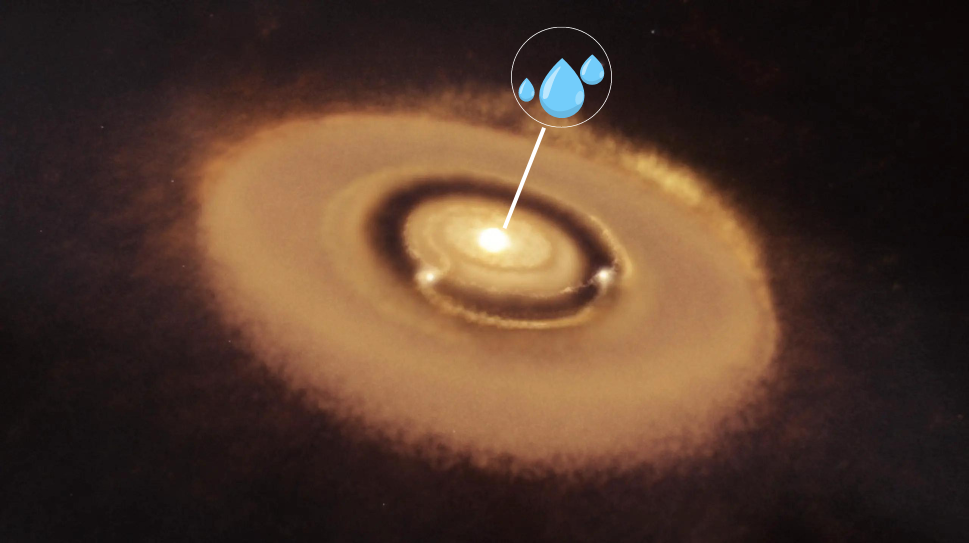
Webb Telescope Detects Water Vapor Near a Young Star: Potential for Life-Bearing Planets
Recently, astronomers utilizing the remarkable capabilities of the Webb telescope made a fascinating revelation—a significant presence of water vapor swirling near a youthful star. The close proximity of this water vapor to the star raises the tantalizing prospect. Planets forming within its system could potentially support life in the future. The planetary system in question, known as PDS 70, attracts intense study. Its intriguing characteristics and potential for nurturing habitable worlds are the reasons behind this focus. Located a staggering 370 light-years away, it has sparked excitement among researchers worldwide.
The Remarkable PDS 70 Planetary System
PDS 70 is a relatively young planetary system, captivating astronomers with its age of about 5.4 million years. It also intrigues them with its cooler nature compared to our sun. Within this system, scientists have confirmed the presence of two gas giant planets, and recent observations indicate a potential third “sibling” planet forming nearby. These findings have sparked excitement among researchers, who eagerly delve into the mysteries of this distant system.
Unraveling the Water Vapor Mystery
The Webb telescope’s Mid-Infrared Instrument detected the unmistakable signature of water vapor within the inner disk of the PDS 70 system, a mere distance of less than 100 million miles from the central star. Astronomers were surprised to discover water vapor in a planet-forming disk of this age, as such a find was unprecedented. The presence of water vapor suggests the potential for water-bearing rocky planets similar to those in our solar system to emerge.
Water’s Role in the Planetary Formation
The newfound water vapor challenges previous assumptions about its ability to endure the intense radiation near a young star. Astronomers had believed that water vapor couldn’t survive for extended periods under such conditions. The high concentration of small dust grains within the inner disk, combined with the presence of water vapor, makes this region particularly intriguing, as it could be where rocky planets, potentially conducive to life, typically take shape.
Investigating the Origin of Water Vapor
Astronomers speculate on the origins of the water vapor within the inner disk. One possibility involves the combination of hydrogen and oxygen atoms, leading to the formation of water molecules. Alternatively, icy dust particles may migrate from the cooler outer disk to the warmer inner disk. During this process, they transform into vapor. The presence of dust in the vicinity acts as a shield. It protects the water vapor from the star’s ultraviolet radiation, preserving its stability.
In a nutshell, the discovery of water vapor near the young star in the PDS 70 planetary system stands as a momentous achievement within the scientific community. It opens up a realm of exciting possibilities, potentially leading us to water-rich planets in the future. Valuable insights into the conditions necessary for habitability are also gained. Continuous observations with the Webb telescope promise to unveil additional secrets. These observations will shed light on the formation and potential habitability of distant planets. They will bring us closer to comprehending the vast diversity of the cosmos and the potential for life beyond our own world.


